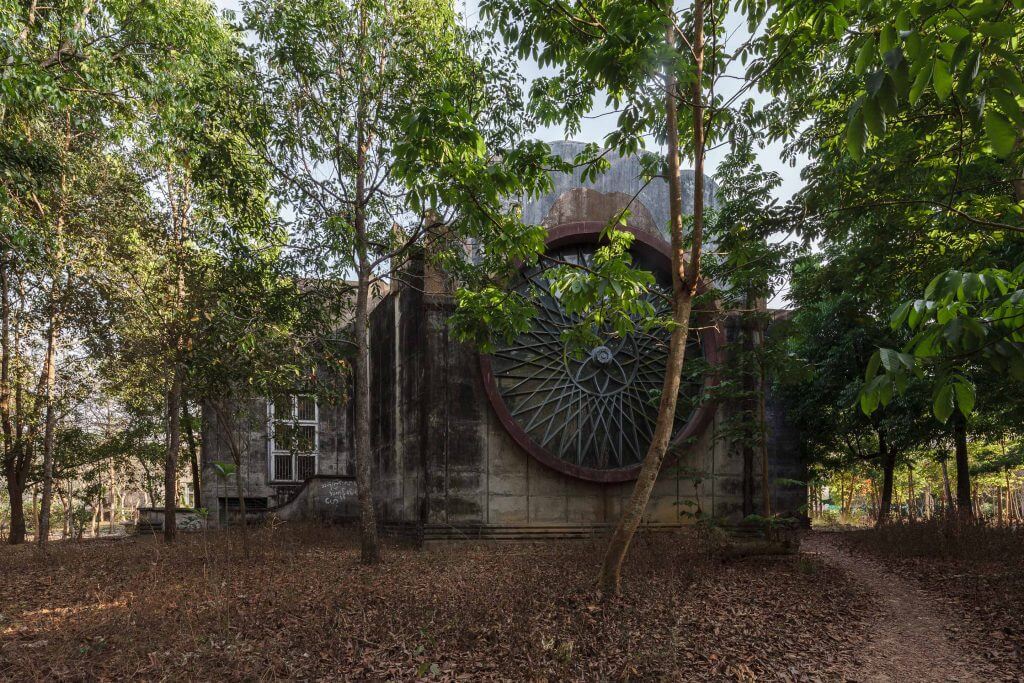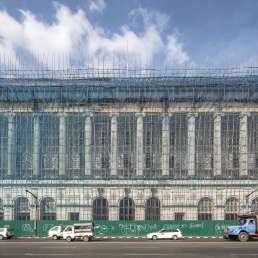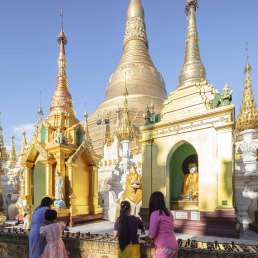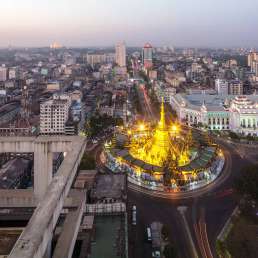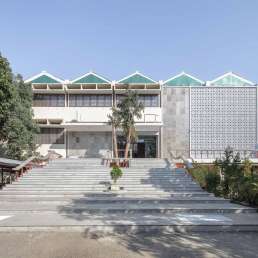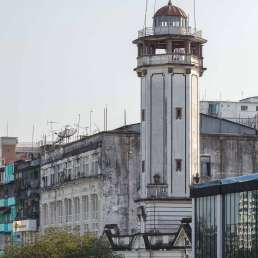Otherwise: Tripitaka Library
Address: Kaba Aye Pagoda Road
Year built: Circa 1956-1961
Architect: Benjamin Polk
Despite being part of the complex, few visitors venture far enough north to find the most interesting building of the whole complex, fenced in and looking somewhat out of bounds. In front of it is an oval pond and manicured, hilly landscape. The Burmese word “Pitaka” derives from the Pali “Tripitaka”, which translates as “Three Baskets” and denotes the canons of Buddhist scriptures. U Nu wanted a library that would store the Pali texts from the respective Theravada Buddhist countries alongside other religious writings that would emerge from the synod. For this, he commissioned an American architect.
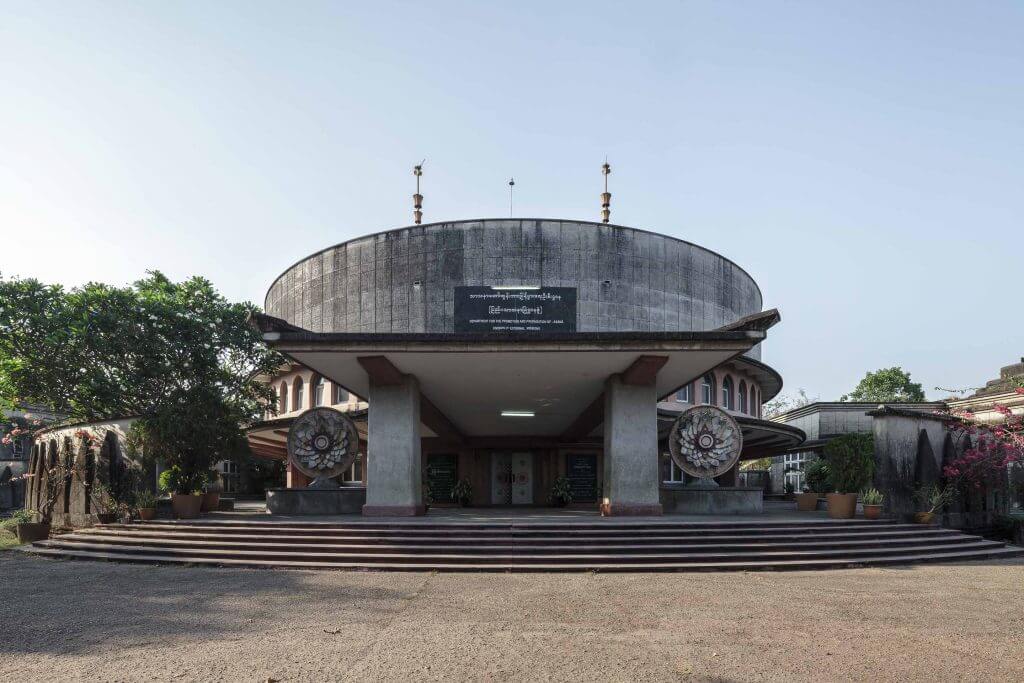
Benjamin Polk (1916–2001) had come to India in 1952 with his wife. He set up practice with fellow American Joseph Allen Stein (1912–2001) in New Delhi in 1955. (Stein had left the US due to the politically and culturally oppressive atmosphere of the McCarthy era.) The two men were later joined by Binoy Chatterjee and ran one of the largest architectural practices in Asia at the time. Together they built all over India. (Lodhi Road in New Delhi is sometimes referred to as “Steinabad” in recognition of the many buildings Stein designed there.) Polk also took assignments abroad, in Nepal for example, where he built the Royal Palace, and of course in post-independence Yangon.
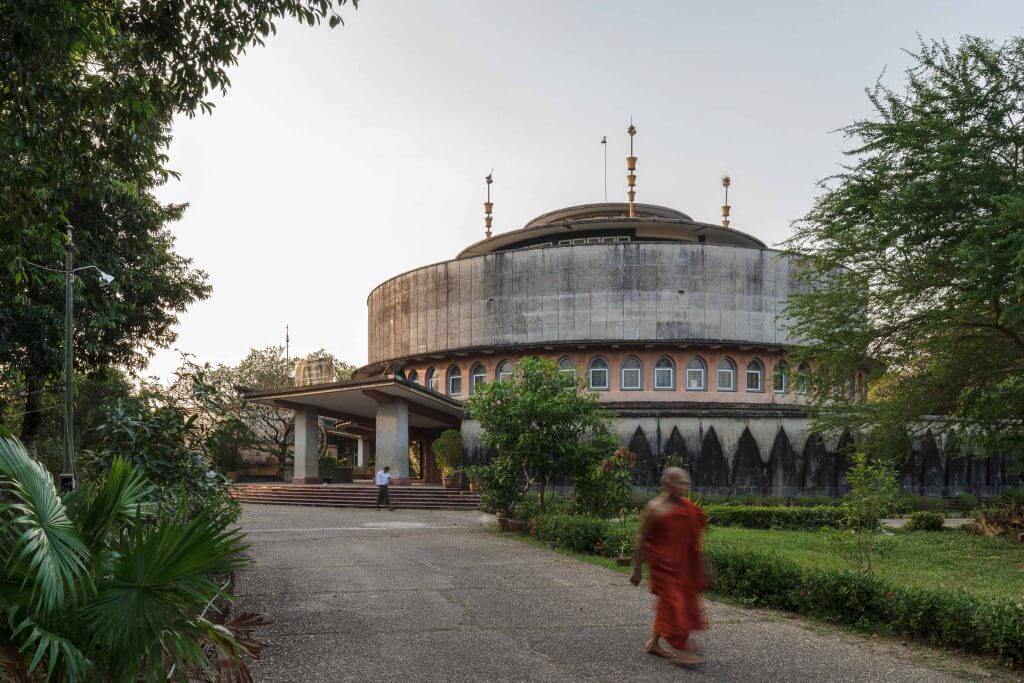
Prime Minister U Nu asked Polk to incorporate a number of highly symbolic elements and numbers into the library design. Note for example the radial design (which follows stupa architecture, above all that of the Sanchi Stupa in Madhya Pradesh, India), the building’s three storeys (after the Three Baskets of Wisdom, or Tripitaka) and the numerous lotuses. The building was to last 2,500 years, until the end of the next Buddhist epoch—quite a brief for a Modernist Western architect! But happily Polk was no dogmatist, so to speak, and proved highly sensitive to the structure’s religious and spiritual components. The material of choice was reinforced concrete. He found that the medium served the spirit of modern Burma and would allow for the building to become an heir to the architectural practices of ancient Bagan (formerly known as “Pagan”). As he explained:
“The traditional Burmese pointed arch from Pagan would now partake of the nature of reinforced concrete with its capacity to resist tension in bending. It would incorporate the structural continuity of reinforced concrete tank design, but cantilevered. Thus the interior arches of the Library could be bound in the central position of the building like the stamen and pistil forms of a flower. Here the uniformly pyramidal silhouettes of Pagan would be punctuated with the cantilever, partially hidden, but giving the weight of the building a dynamic upward and outward thrust behind the encircling walls. Perhaps there is something ‘primitive’ here.”
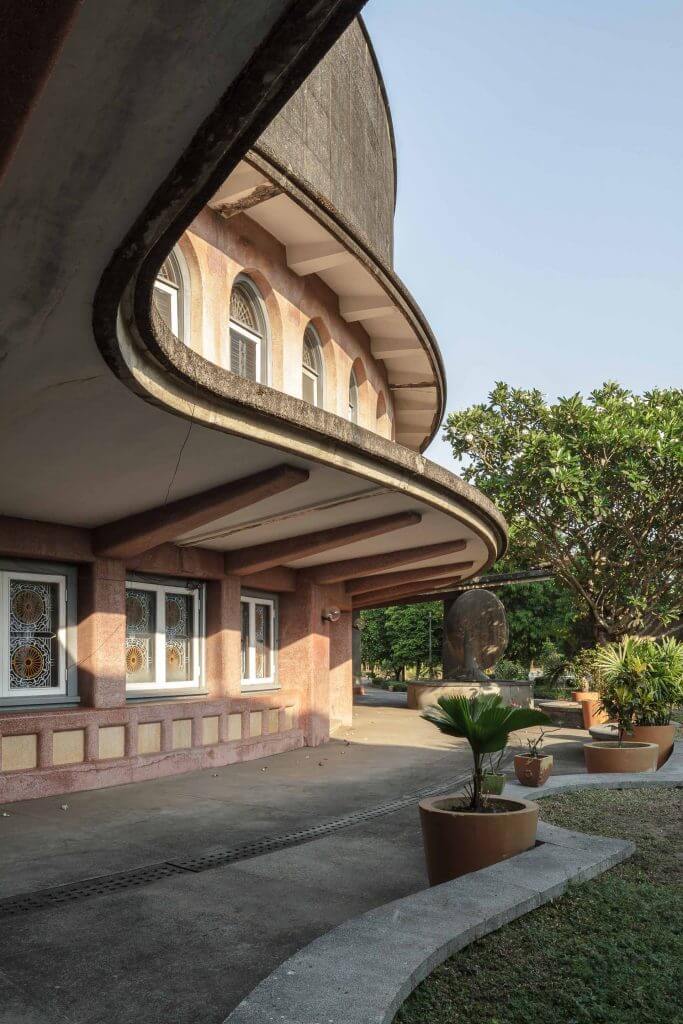
The library was designed with three wings, containing a public library, an auditorium and a religious museum respectively. The central core of the building would be reserved for scholars and monks of the institute, as a sanctuary for study and meditation. An Indian site manager named Visvanath Jhanjee oversaw the construction process. It was to take five years and ran into its own set of problems. An ethnic Chinese carpenter foreman was murdered. The first site engineer had to be removed from the job after he was found to have a drinking problem. The “political vicissitudes” of the times also plagued U Nu’s pet project, as Ne Win replaced him as prime minister between 1958 and 1960. We therefore date the start of the construction between 1955 or 1956 (the latter being the end of the Sixth Synod) and 1960 or 1961, by which time U Nu had won back this prime ministerial post. U Nu was also present at the inauguration ceremony and served the architects the first two dishes of its banquet. A Soviet publication at the time credits the library to both Polk and Stein, although Polk makes no mention of his partner’s involvement in Yangon.
This building is magical. With its bold architectural design, it conveys the bygone optimism of a young Buddhist nation.
